5 charts that show exactly why everyone is freaking out about food prices right now
Huileng Tan

- A UN price index of food items has hit a record high after rising 12.6% in March from a month ago.
- Russia and Ukraine account for 30% of global wheat and 80% of global sunflower exports.
Prices of food staples like grains and vegetable oil are are soaring, sending the prices of US groceries 10% higher on-year in March.
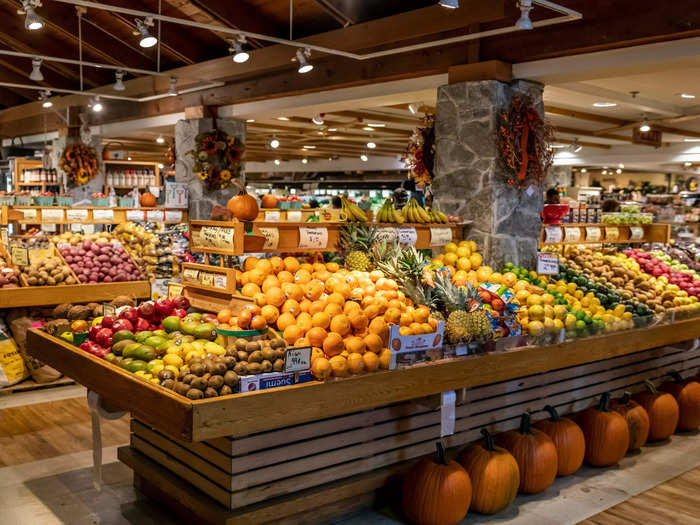
Inflation is so bad it sent a price index of food items from the United Nations Food and Agriculture Organization (FAO) 12.6% up on-month in March to a high not seen since the organization started measuring international food prices in 1990.
The biggest price gains came from a price index that measures the prices of grains like wheat and corn, and a vegetable oil index that measures the prices of products like sunflower oil and soybean oil.
Russia and Ukraine, located in the Black Sea region, account for 30% of global wheat exports and 80% of global sunflower exports, according to the FAO. With the war in Ukraine and sanctions against Russia, supply chains for the commodities have been disrupted, driving prices up and contributing to consumer inflation — which was already flaring up before the war as the pandemic ebbed.
"With energy prices rising in parallel with food prices, the purchasing power of vulnerable consumers has further decreased," said FAO Director-General Qu Dongyu in a speech last Friday, according to a transcript published online. "This additional burden comes at a time when higher health spending and the costs of controlling the pandemic are already squeezing the budgets of many governments."
Here's how bad food inflation is in five charts that track the prices of food from January 1990 through March 2022.
1. World food prices made 'a giant leap' to a record high in March.
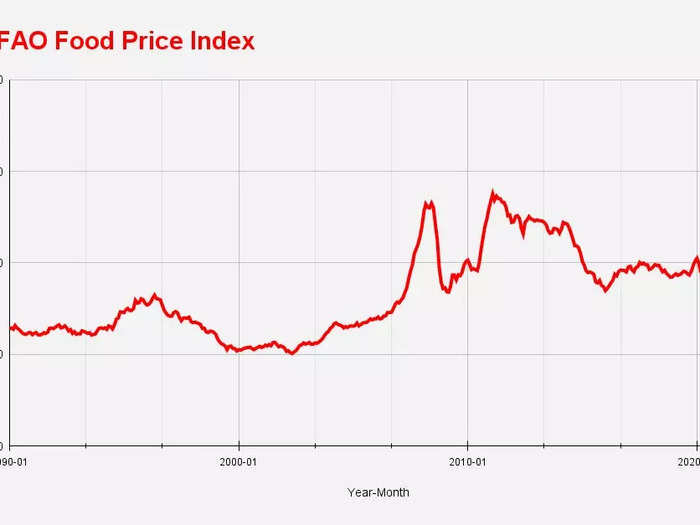
The FAO Food Price Index rose 12.6% in March from February, "making a giant leap to a new highest level since its inception in 1990," said the UN FAO in its latest release.
The FAO Food Price Index measures the prices of a basket of food through the average of five commodity group price indices — cereals, vegetable oil, meat, dairy and sugar — all of which gained in March.
The surge in food prices is expected to hit developing nations especially hard, the UN said in separate report released on Wednesday.
"Vulnerable populations in developing countries are particularly exposed to these price swings, as they dedicate the larger share of their income to food and energy," said the UN. "The world's poorest countries tend to be net food importers and export and import measures on trade can further exacerbate rising food prices."
2. Vegetable-oil prices were up almost 25% in a month.
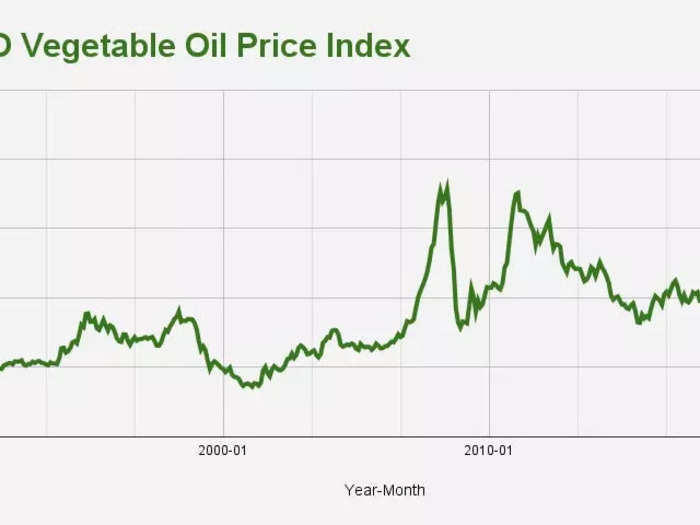
The FAO's Vegetable Oil Price Index rose 23% on-month to a record high in March.
Ukraine accounts for four-fifths of sunflower exports, but the war has caused massive disruption in the supply of sunflower seeds.
There is "limited scope for raising production and exports of other oils and fats to offset the shortage of supplies from the Black Sea," Oil World, an oilseeds trade news and research outlet, wrote in March 25 release.
The supply disruption in sunflower seeds has driven up prices of competing oilseeds used to make cooking oil, as importers shifted to buying soybeans, oil palm, and rapeseed.
Volatile oil prices — which surged to 14-year highs on the back of the Ukraine war — also pushed up vegetable oil prices as the oilseeds are used to make biodiesel for transport fuels, per the FAO.
Outside of Ukraine, weather concerns are contributing to price gains in wheat as the La Nina weather phenomenon is expected to cut this year's harvest from Brazil, the world's top soybean producer, S&P Global reported last week, citing the country's national agricultural agency.
3. Cereal prices rose almost 20% on-month due to supply disruptions.
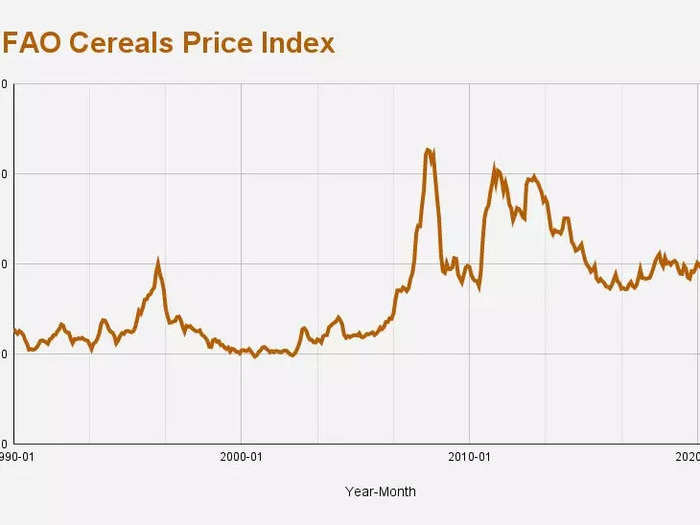
Cereal prices tracked by the FAO surged 17% in March from February to a record high due to a spike in global wheat and coarse grains prices.
The increase was driven first and foremost by export disruptions out of Ukraine, the FAO wrote in its report. "The expected loss of exports from the Black Sea region exacerbated the already tight global availability of wheat," the FAO continued.
Other than wheat, corn prices also climbed 20%, as Ukraine is a major exporter of the grain. The price jumps spilled over into other markets like sorghum and barley, pushing their prices up by 17.3% and 27.1% respectively, according to FAO data.
4. Meat prices jumped 5% from February due to bird flu and increased demand.
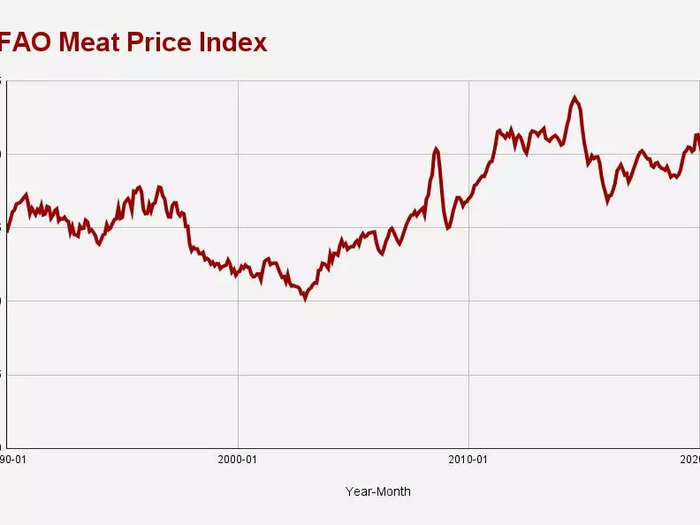
The FAO's meat index tracks pork, poultry, beef, and mutton prices.
Ukraine is one of the top 10 exporters of poultry worldwide. At the same time as the war disrupted supplies, bird-flu outbreaks globally — including in the US — contributed to higher poultry meat prices, according to the FAO.
In March, pork prices posted the steepest monthly increase on record since 1995, in part due to a surge in demand ahead of the Easter holidays, the FAO said.
The meat supply chain is also facing cost-inflation pressure due to price increases in animal feed, which is made from grains like soybean and corn, Rabobank said last week.
5. Dairy prices rose 2.6% in February, marking the index's 7th straight month of gains.
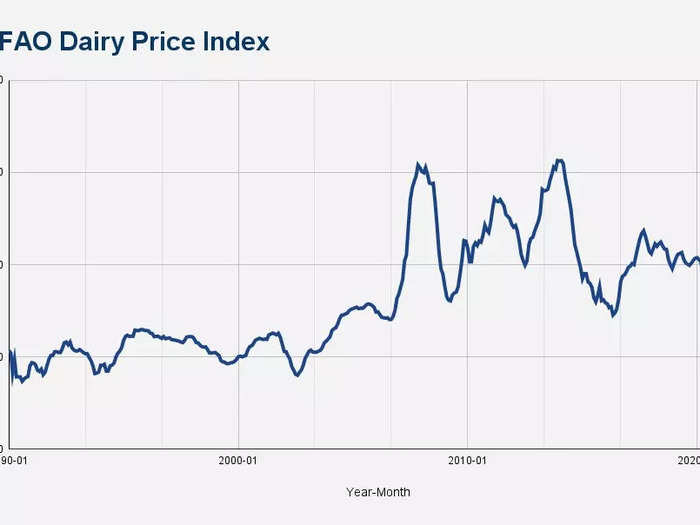
Inadequate milk output in Western Europe and Oceania sent dairy prices up 2.6% in March, according to the FAO. The supply crunch came on the back of a surge in import demand from markets in Asia and Western Europe, the organization said.
The Ukraine war has also contributed to the uptick in milk prices because input costs like animal feed, which is made from grains, and transport costs have gone up.
Fonterra, the world's largest dairy exporter, said in March it was paying 30% more for milk than it was a year ago.
"The conflict in Ukraine has added to an already complex Covid-19 operating environment, impacting global supply chains, the oil price and global supply of grains," said Miles Hurrell, CEO of the New Zealand company, in its interim results announcement.
READ MORE ARTICLES ON
Popular Right Now
Popular Keywords
Advertisement